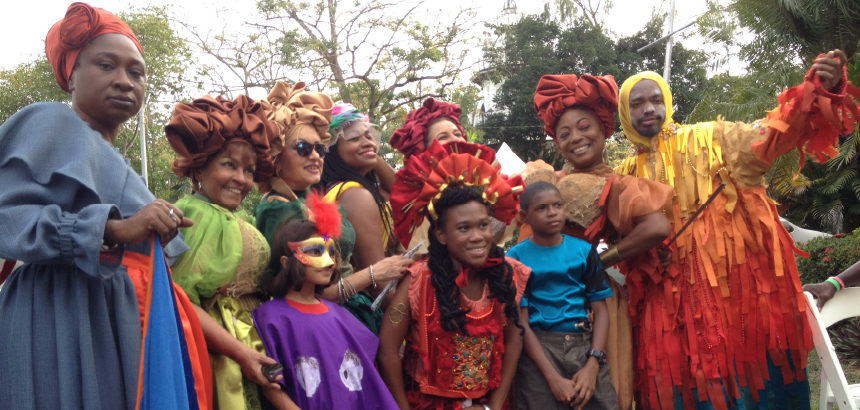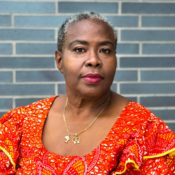It is by no happenstance that my play Danse Macabre was inspired by the Black Lives Matter Movement. In 2020, like the rest of the world, I sat in wonder and daze as people took to the streets world over to denounce anti-black racism and systemic racism in the wake of George Floyd’s ‘execution’ live on Facebook.
We were in the height of a pandemic and we were told to Separate, Isolate and Quarantine (SIQ). Toronto was in a lockdown and so were many other cities. I sat on that favourite chair in my living room locked on to CNN, oftentimes surfing through BBC and Al Jazeera for hours, days and weeks.
From Japan to Norway, Canada to the Caribbean, people of every race took to the streets in solidarity of Black lives lost to the Police. Their chant ‘Black Lives Matter’ rose through their marches with a rhythmic cadence that I can still hear in my head. I sat in my chair baffled. Whatever became of the lockdown, state of emergencies and the SIQ? What would possess persons to defy all this, risk their lives with or without a mask to say, ‘enough is enough.’
As I watched Chinese, Japanese, South Asians and White people chant ‘Black Lives Matter’, I pondered. Do they know and truly understand WHY Black Lives Matter? Why after the killing of Trayvon Martin and George Zimmerman’s subsequent acquittal, a social media hashtag to protest this action began to trend, and ultimately skyrocketed into a Movement? I resolved that they don’t really know, and while being an ally and standing in solidarity is all well and good, knowledge and enlightenment is powerful. This is when I began to muse on the play Danse Macabre as a portal into understanding the audacity of Black bodies saying Black Lives Matter. NO! Not ALL Lives. BLACK Lives.
I take inspiration from Brecht’s Epic Theatre and Gabriel Garcia Marquez’ Magic Realism for Danse Macabre. The play tells the story of a Carnival costume designer, ‘Cisco’, whose creative impulse and commitment to producing a band of historical and cultural importance leads to an invocation/recuperation of key historical events of the Black diaspora experience. From the cultural amputation of the enslaved from Africa, through cultural signposts of struggle across the diaspora, to the ascendancy of resistance and the Haitian revolution. This then explodes on the festival stage in a celebratory dance Macabre of rebirth by fire that finally leads to the designer’s self-sequestered withdrawal from society and her art. In the process, she becomes a spiritual vessel of repatriated/emancipated consciousness.
Toronto Carnival formerly Caribana was founded in 1967 when a group of Trinidadians and their fellow Caribbean colleagues wanted to commemorate Canada’s centennial with the gift of Caribana in Toronto. It was a time of civil rights protests and Vietnam war sympathizers and as such, the early architects of Caribana were careful to curtail the traditional and more political aspects of the carnival. They concerned themselves with the ‘Pretty Mas’ and colourful costumes and dumbed down the traditional carnival. There was no place for the ‘Ole Mas’ traditions which were born out of protest and resistance by my Post-Emancipated African ancestors.
Carnival was brought to Trinidad by the French colonial masters circa 1763. During the time of enslavement, Carnival days were perhaps the only time for some reprieve for the field enslaved. Those who worked in the Great House had the added attraction of witnessing the Masquerade Ball and mimicry of the French Court by their Masters on Dimanche Gras Night.
By August 1, 1834 when the Emancipation Proclamation was read for the enslaved in Trinidad, the emancipated Africans took to the streets to celebrate their freedom in a manner similar to what they saw the masters practised in February. They mimicked their masters and poked fun at them in the most lewd and vulgar manner they could imagine.
Naturally as time went by, the colonizers would have none of this vulgarity and made attempts to stifle the Jamette carnival—The Jamettes being a Creole/Patois derivative from the French word diametre, meaning a section of the society that was of the low class or of being under the barometer of society. It came to blows when in 1881, an eager Police Commissioner, Captain Baker, and his forces attempted to stop the carnival of the Jamettes who were seen as too noisy and vulgar for the ‘decent’ folks of society. In the wake of the confrontation, several police were injured and they had to retreat to the barracks in embarrassment. The then Governor of the island chastised the Commissioner for his actions and went on to grant the Jamettes the right and freedom to parade and celebrate the carnival as they ‘so wish’.
The colonizers still had their say in banning certain mas characters that were seen as vulgar and lewd. One such mas being Pissinlit. A man dressed as a woman during menstruation. His white dress was all bloodied and soiled as he dragged a bloody cloth between his legs. Still, some more subversive mas continued. There were the Ole Mas characters bearing a placard parodying aspects of the society. Local and International Social, Political and Scandals of the day were played out in a 1-3 mins pantomime.
In 2005, when my company, Theatre Archipelago attempted to do this Ole Mas tradition on the Lakeshore for Caribana, again an ‘eager Police’ came rushing to stop us from parading because they thought we were protesters of the Caribana. That was the year Jamaican t-shirt bands were no longer allowed in the Parade, so a Jamaican backlash and interference of the parade that year was on a spoiler alert.
Fortunately or unfortunately, I cannot blame the goodly Canadian Policeman, he only knows the ‘Pretty Mas’. He and the rest of the Canadian public including the young millennial masqueraders, all think it is one big street ‘Parday’. Clueless to the fact that the Carnival they so now enjoy here in the Diaspora was born out of resistance of Black bodies taking to the streets of Port of Spain Trinidad more than two centuries ago.
Rhoma Spencer is an Actor, Director, Playcreator and Comedian. When not doing all of the above she is Chef. See her Workshop Presentation of Danse Macabre on February 26 in the Cabaret Space and as an actor in the play, House of Bernarda Alba at Buddies, April 6-24.


